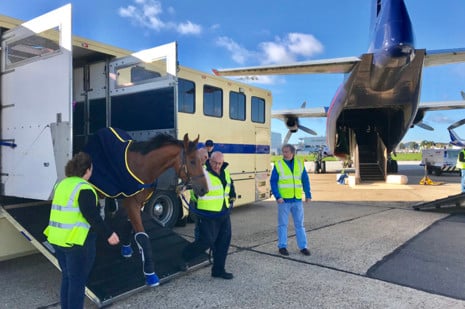
Live animal shipping is a significant part of air cargo, with hundreds of racehorses being shipped by air every day alone. Due to the nature of dealing with living creatures, there is much to know about airline animal shipping requirements to ensure the safe delivery of each animal.
When it comes to animal shipping by air, there are several questions frequently asked. How to ship live animals is a multi-fold issue that needs addressing to clear up misconceptions and potential problems.
Any person or company shipping animals by air needs to follow the IATA Live Animals Regulations (LAR ) when they are:
Some of the main aspects to be considered when making a booking are:
The complete list of items to consider can be found in the IATA Live Animals Regulations.
When it comes to transporting live animals via air, important items must be verified and confirmed before the animal is prepared for the journey. Here are a few of the steps that must be taken:
You will find the complete list and steps to consider in the IATA Live Animals Regulations.
For international animal shipping of live animals, the minimum documents required by shippers are the Import Permit, Health Certification, and the Shipper’s Certificate.
The shipper’s responsibilities for shipping animals by air consist of preparing the animal for transport. The shipper must fill out all appropriate paperwork legibly and in full. They must make the proper reservations. It is the shipper’s responsibility to ensure the animals are placed in proper containers and that the containers are appropriately marked and labeled. They also need to provide the consignee and emergency contact information in case any issues arise.
The carrier is responsible for the welfare and safe transport throughout the delivery of all live animals being shipped by air. A few of the key responsibilities include reviewing the live animals’ shipment documentation, safely loading live animals into aircraft holding areas according to airline animal shipping requirements, in addition to properly securing the live animal cargo and delivering it safely to its destination. The IATA Live Animal Acceptance Checklist provides you with a full list of items to review before as part of the acceptance process.
Other stakeholders have a responsibility for the safe transport of live animals. Freight forwarders must take a great deal of care in ensuring that they have correctly completed all the required documentation and ground support personnel must be properly trained to handle live animals with care. Properly labeling the containers helps these stakeholders in the adequate handling and decreasing possible injuries to animals.
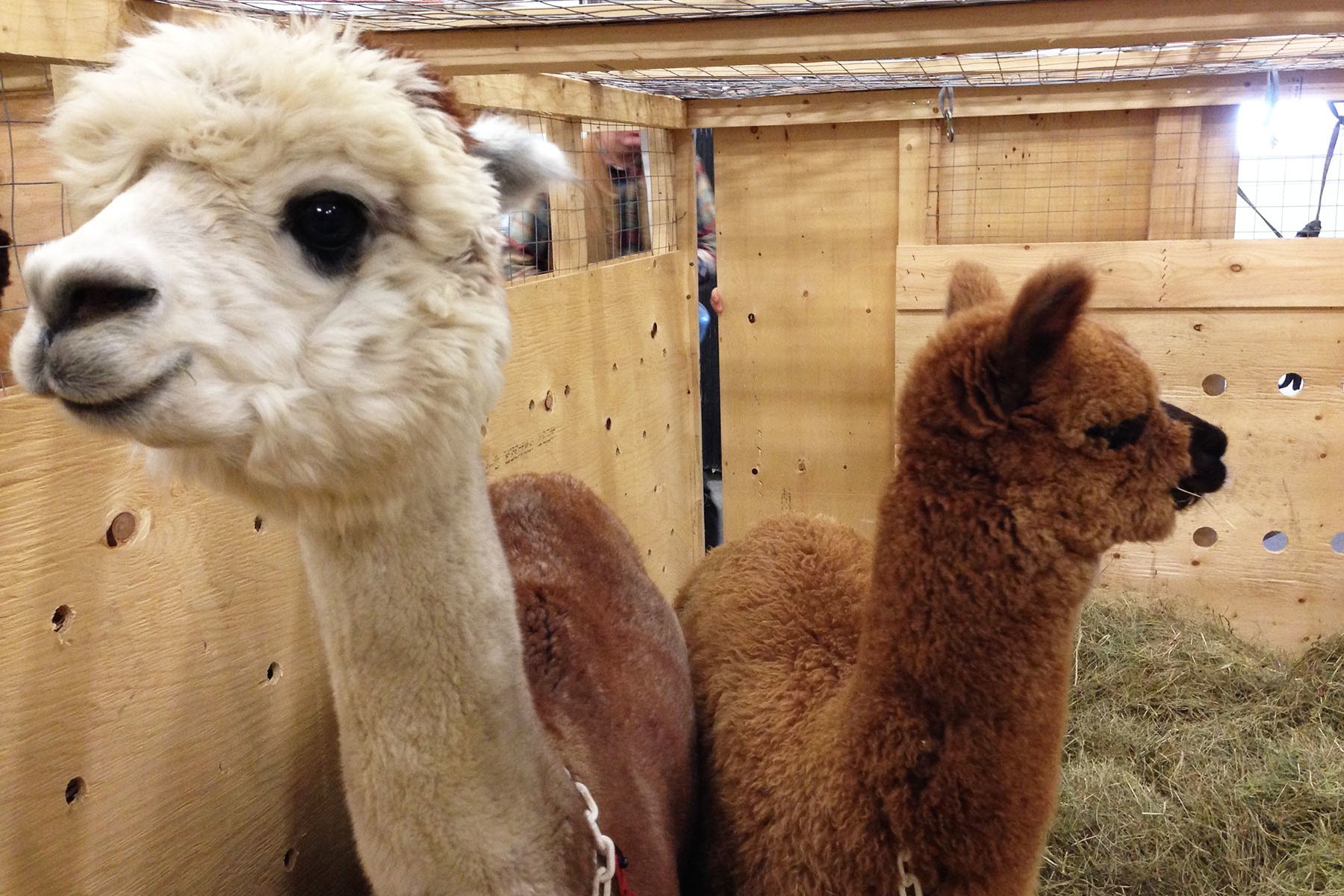
Animals are not fond of unknown environments and the unsteady shifts of being transported. Following specific guidelines helps alleviate some of their fearful behaviors, creating a safer environment for the live animal and the personnel involved in animal shipping.
It is essential to look out for the following behaviors when shipping live animals:
It is crucial to avoid disturbing the live animals during the air transport. Also, distancing males from females or animals that are natural enemies, if they must be carried on the same flight, is essential.
Proper listing, description, and notation of sizes of species are important in safe live animal shipping by air. The kingdom of Animalia is broken down into their common and scientific name and assigned a letter code to easily identify their class (mammal, bird, amphibian, etc.). It is also essential to correctly measure the animals and notate the sizes on the appropriate forms along with the common description.
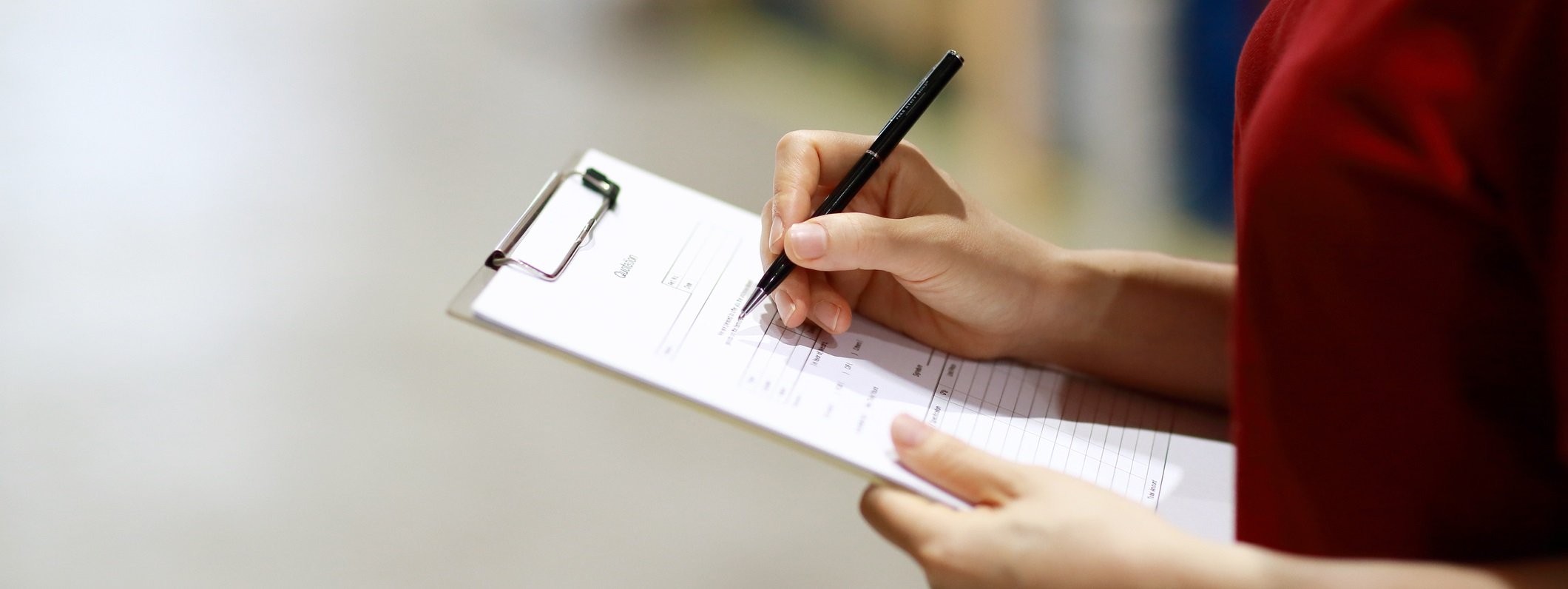
IATA recognized the need and opportunity to improve the efficiency and cost-effectiveness of the air cargo supply chain. Today, the air cargo industry still almost exclusively relies on paper-based processes to support the movement of freight. The average shipment generates more than 30 paper documents that are used and/or handled by the various parties involved. Many of the processes still depend on human intervention. These paper-based processes are not cost-effective, nor do they serve the key requirements of air cargo: security, speed and reliability. To help with this, the e-freight system has been developed to easy transmission of documents between shippers, freight forwarders, ground handlers, custom brokers, and carriers. The system helps alleviate the paperwork for customs, transport, and commercial and special cargo documents. This is especially helpful for the airline animal document, as several documents are required such as the:
You will find the full list of document requirements in the latest edition of the IATA Live Animals Regulations.
View the on-demand webinar: Dog Import Permit Guidance for Airlines
The shipper is required to complete a Shipper’s Certification for Live Animals for each shipment. The form must be completed in English and, if needed, supplemented with a translated version. This form should be completed and signed in duplicate.
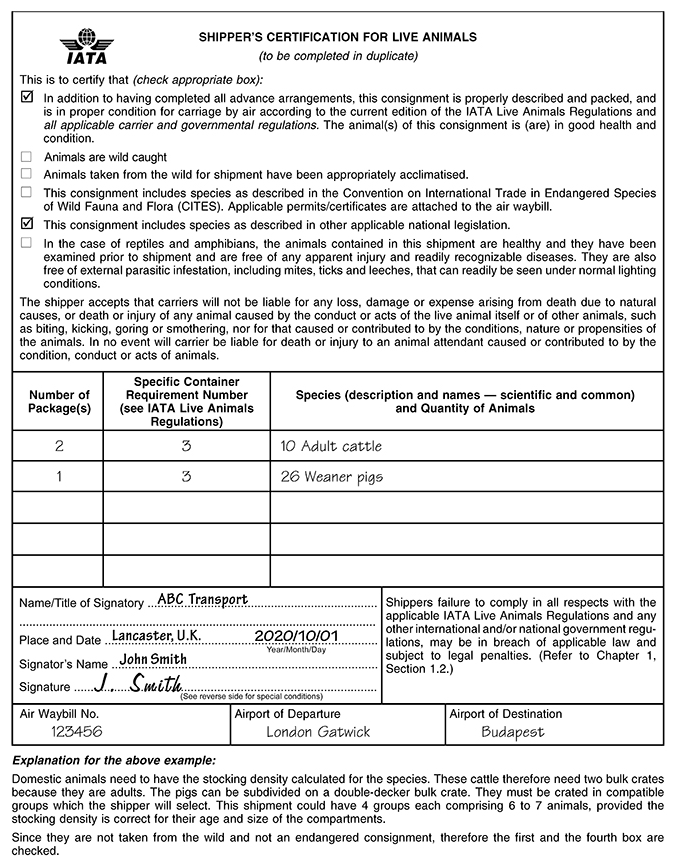
Live animals cannot be entered on the same Air Waybill as other items being shipped. Shipping animals by air requires its own specific Air Waybill that includes a 24-hour emergency contact in the “Handling Information”.
Any specimen of a species included in one of the CITES appendices of the IATA’s Live Animal Regulations (LAR) manual must be accompanied by a CITES document. The document can be one of the following:
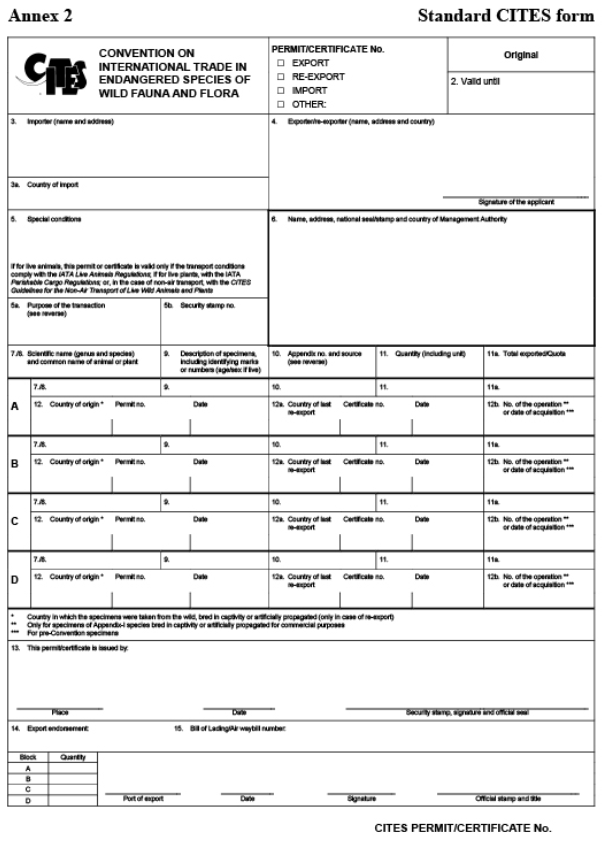
For airline animal acceptance, IATA’s Live Animal Acceptance Checklist is a required document. The checklist must be filled out and the items verified before accepting or rejecting a live animal shipment. The Live Animal Acceptance Checklist must be filled out in its entirety. A similar checklist has been developed for the acceptance of live animals traveling in-cabin.
When shipping live animals, the construction, size, ventilation amongst other characteristics of the container are crucial in order to ensure the safety and wellbeing of the animal Airline animal containers should be relevant to the type of animals being shipped, such as reinforced containers for destructive animals and double-packed ones for venomous animals.
The containers must be designed for easy handling, including appropriate spacers for forklifts where necessary. Depending on the species, live animals containers should be adequately ventilated on three sides and the container must always be designed from accidental opening and safe from causing any harm to the live animal.
You can find an extensive list of container requirements by species in the IATA Live Animals Regulations.
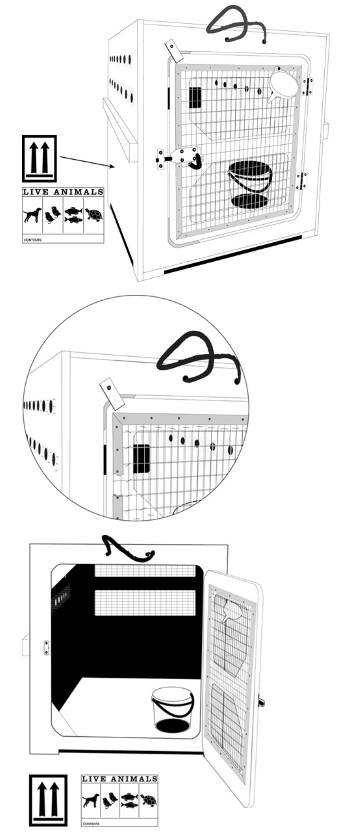
It is the shipper’s responsibility to properly mark and label all live animal containers for shipment by air. Each container should be large enough to fit all the required labels on the outside.
Each live animal container should be marked with the required information in English and the language which may be required by the state of origin.
Labeling must conform to regulation’s requirement regarding shape, color, format, symbol, and text. The labels must be durable and be able to withstand the rigors of transport.
When affixing the labels to the container, at least one IATA compliant “Live Animals” label must be attached or imprinted on each container.
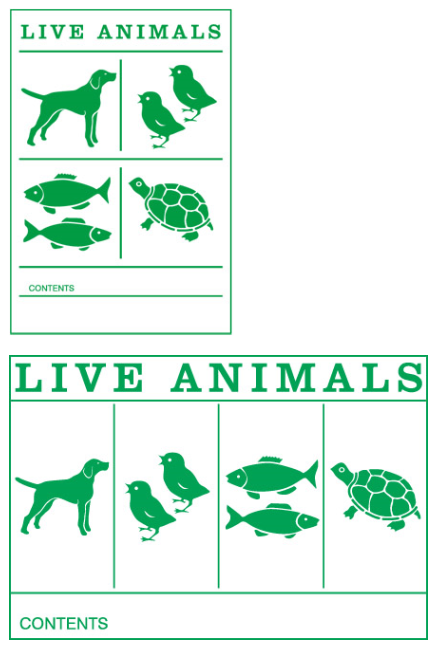
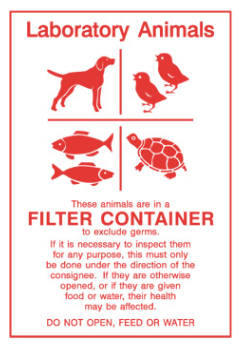
While great care is always taken with air cargo, it is even more critical when dealing with live creatures to ensure safe live animal shipping. The following handling procedures are steps every airline should take for shipping live animals safely and effectively.
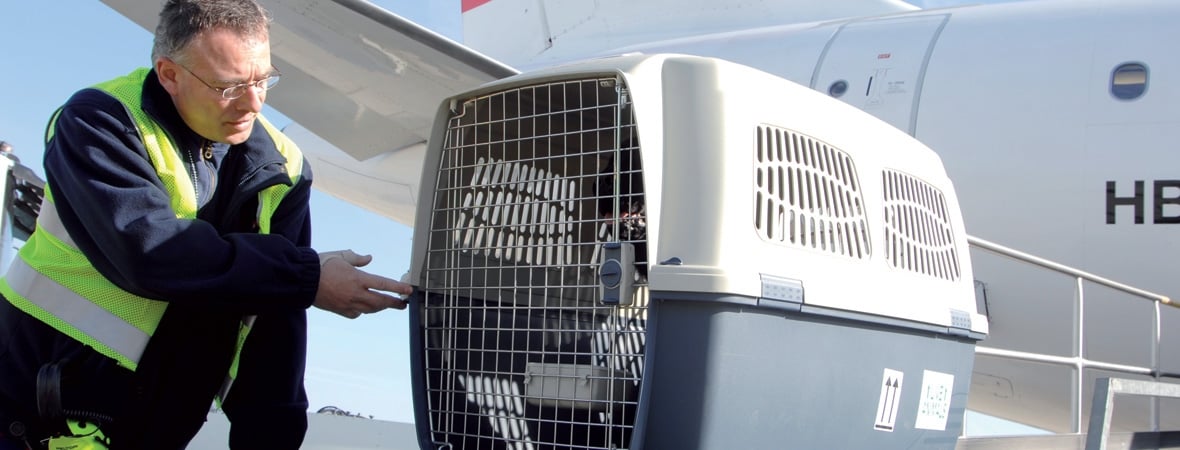
The acceptance of live animals for shipping by air is an essential part of the process of safe delivery. Carriers should only accept live animals that appear to be in good condition and health. The carrier should verify that the required airline animal documentation is in order, that containers are conform to design standards, the marking and labeling meet guidelines, and the reservation and routing are in line. All IATA Live Animals Acceptance Checklist and In-Cabin Live Animals Acceptance Checklist criteria must be cleared to accept the live animals for shipping.
Ground handling takes great care when handling live animals. Only appropriately trained and competent people are allowed to handle and transport live animals because it’s essential to avoid disturbing the animals. Unauthorized personnel must avoid approaching or disturbing the live animals at all times. Food and water should be given according to handling instructions, and proper ventilation should always be available. If necessary, appropriate steps should be taken to remove sick or deceased animals.
After off-loading the live animals, the airline animal containers and aircraft holds must be cleaned and disinfected.
Live animals should only be loaded according to their specific needs and placed in suitable aircraft compartments. Their containers should always be handled and stowed in the direction as indicated on the labels placed on the container. They should be loaded according to guidelines found within the IATA Live Animals Regulations (LAR) manual. Precautions should be taken to ensure other loads do not shift or fall on live animal containers during transport. Netting can also be used to ensure that the container doesn’t move or flip. You can find all the loading instructions in the IATA Live Animals Regulations (LAR) manual.
In some cases, feeding and watering might take place when shipping live animals by air. Incorrect food can be dangerous to animals, so it is vital to adhere to the care instructions affixed to the live animal container. The spare food should be attached to the airline animal container by the shipper, alleviating any guesswork.
Once the live animal cargo has been loaded, the captain must be advised of all live cargo species, location, and quantity. The flight crew is notified via a NOTOC (Notification to Captain) regarding live animal load and necessary actions.
It is crucial that no live animals be transported near any foodstuffs, unless hermetically sealed, during any part of the shipment.
If any animals have become injured or fallen ill, they should receive veterinary care if possible. Ill or deceased animals should be removed or separated from cages carrying other live animals if possible.
When in use, areas where live animals are held at the airport must be disinfected every 24 hours.
Personnel should avoid physical contact with animals, and strict personal hygiene rules should be followed. Personnel who regularly handle live animals should be appropriately immunized. When handling venomous or poisonous animals, personal protective equipment (PPE) should be used.
Live animal holding areas should be cleaned and disinfected similarly to the aircraft hold areas. It is necessary to follow the local guidelines for proper disinfection. More details can be found in Section 10.7 of the IATA Live Animals Regulations manual.
IATA recognizes that live animal shipping takes extra care and proper training, which is IATA has developed the IATA Live Animal Regulations (LAR) manual and Live Animal Regulations (LAR) training courses. These tools provide the strictest guidelines needed to meet the requirements to ship live animals by air. IATA takes excellent care to ensure all stakeholders have the information they need at their fingertips to do their job correctly and keep your animals safe, from door to door. The manual and the courses are updated annually to ensure that all the participants are aware of the latest rules and regulations as well as best practices. In addition, the IATA CEIV Live Animals certification program exists to validate the applicability of regulations within companies processes and procedures.
You can find all the rules and regulations on shipping live animals by air in the IATA Live Animal Regulations (LAR) manual. In it, you can find further information touched on in this article. For other articles and training, go to IATA.org where you can find many helpful resources to assist you in all your live animal shipping needs.